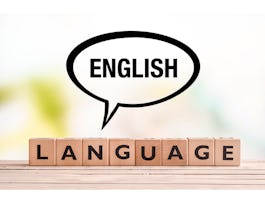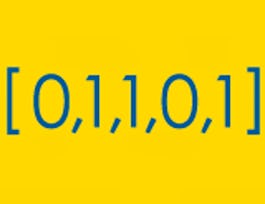In this course, “Simple Past Tense,” you will learn how to form and use the simple past. You will see that there are a lot of irregular verbs in the simple past, but there are some patterns you can use to help you remember. You will learn about spelling changes when you add an “-ed” ending, as well as how to form negatives and questions in the past. You will also learn about object pronouns and some other forms of adjectives to describe and make comparisons.



Simple Past Tense
This course is part of Learn English: Beginning Grammar Specialization


Instructors: Rachel Fernandez
Sponsored by ITC-Infotech
34,225 already enrolled
(812 reviews)
Skills you'll gain
Details to know

Add to your LinkedIn profile
4 assignments
See how employees at top companies are mastering in-demand skills

Build your subject-matter expertise
- Learn new concepts from industry experts
- Gain a foundational understanding of a subject or tool
- Develop job-relevant skills with hands-on projects
- Earn a shareable career certificate


Earn a career certificate
Add this credential to your LinkedIn profile, resume, or CV
Share it on social media and in your performance review

There are 4 modules in this course
This week is about the simple past. You will learn how to form BE in the simple past first. Then you will learn about how to add -ed to form the simple past of regular verbs and the spelling changes you need to make. Then you will see a long list of irregular verbs in the simple past. There are many irregular verbs that you just need to remember.
What's included
4 videos3 readings1 assignment
This week, you will learn about how to form the negative of the simple past. It is different for BE and for all other verbs. The good news is that in the negative form there are no irregular forms. You will also learn about object pronouns. You will learn the difference between the pronouns “she” and “her,” and “he” and “him.”
What's included
3 videos3 readings1 assignment
This week is all about how to form questions in the simple past. You will learn how to ask questions with the BE verb and how to use “did” to ask questions with all other verbs. This will include yes/no questions and information questions.
What's included
3 videos3 readings1 assignment
In this last week, we will look at some other grammar points to help you express yourself in English. You will learn how to use “this,” “that,” “these,” and “those.” We will also look at how to change adjectives to make comparisons. Finally, you will learn about infinitives. Infinitives are an unchanged form of a verb with the word “to.” We use them with verbs like ”need,” “want,” and “like.”
What's included
3 videos3 readings1 assignment
Instructors

Offered by
Why people choose Coursera for their career




Learner reviews
812 reviews
- 5 stars
92.78%
- 4 stars
5.62%
- 3 stars
1.10%
- 2 stars
0.36%
- 1 star
0.12%
Showing 3 of 812
Reviewed on Jul 13, 2023
These courses are good for the second native user to start learning English
Reviewed on Dec 31, 2022
This course was very useful for me. I learnt new words and sentence structure from here. I think, If it is good to add a session to how to make questions using past tense.
Reviewed on Mar 20, 2023
i am going to share my experiences . i am very glad to join coursera. The teacher is amazing ,her videos are the best .i can easily understand .thank u so much teacher and also Coursera
Recommended if you're interested in Language Learning

University of California, Irvine

University of California, Davis

Open new doors with Coursera Plus
Unlimited access to 10,000+ world-class courses, hands-on projects, and job-ready certificate programs - all included in your subscription
Advance your career with an online degree
Earn a degree from world-class universities - 100% online
Join over 3,400 global companies that choose Coursera for Business
Upskill your employees to excel in the digital economy




